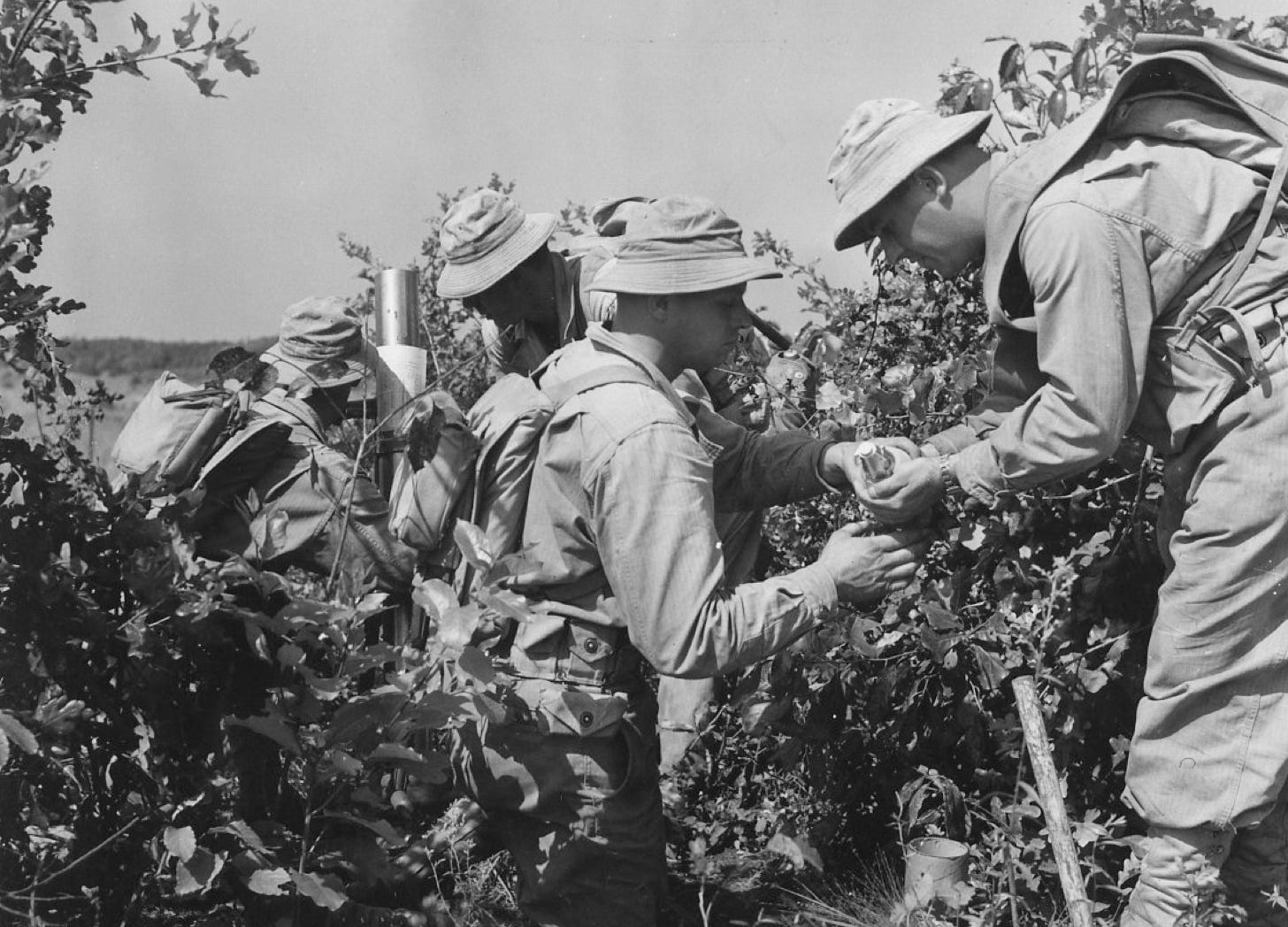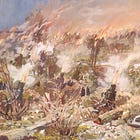Find the Hidden Mortars
Articles about the use of 'hip-pocket artillery'

First, the good news. The library shelves groan under the weight of worthwhile works about the employment of mortars. Better yet, many of these can be found on the internet, often for free. Now, the bad news. The word ‘mortar’ rarely appears in the title of these books, articles, reports, and papers. What is worse, when you search for such writings in conventional ways, you will have to wade through a great deal of material about laying of bricks, the making of pesto, and the dropping of very large objects on fortresses and dreadnoughts.
So, what’s a mortar-lovin’ reader to do?
One place to start is the large (and growing) collection of pertinent posts published by The Tactical Notebook. (You can find a guide to these at the end of the post, in the section marked ‘for further reading’.)
Another is the back catalog of Infantry magazine, and its predecessors: The Infantry Journal, the Infantry School Mailing List, and the Infantry School Quarterly. (Please note that none of these collections is complete. Thus, if you can’t find what you seek at the Hathi Trust site, look for it on the Internet Archive, and vice versa.)
You can also find ink-and-paper copies of back issues of these journals at many base libraries, larger public libraries, and the libraries of colleges that host (or used to host) units of the Army Reserve Officer Training Program.)
If you are in the market for accounts of the employment of mortars on active service, the first place to look is the massive collection of ‘personal experience monographs’ on file at the Donavan Library of the US Army Infantry School. Written by students at the Infantry Advanced Course who served as junior officers (and, in a few cases, non-commissioned officers) during the Second World War, these look at the engagements of companies, battalions, and (in a few cases) regiments from the perspective of platoon leaders, company executive officers, and company commanders.
Of the more than four hundred papers in this dragon’s hoard of recollections, six provided detailed description of the work of mortar units. In particular, while four (Townsend, Short, Fawcett, and Barnum1) focus on the challenges faced by the leaders of mortar platoons, two (Smith and Hankel) look at battalion operations from the point of view of officers serving with heavy weapons companies.2
For Further Reading:
To Subscribe, Share, or Support:
If you ever thought it was a good idea to drop a baseplate out of an aircraft without the aid of a parachute, please read pages 12 and 13 of Lieutenant Barnum’s monograph.
As you might imagine, I have not read all 446 of the monographs in this collection. Thus, it is quite possible that I have missed accounts that offer detailed discussions of mortars and their use.




